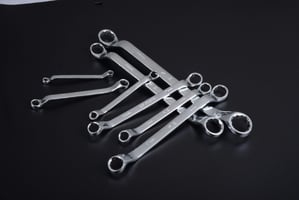What if the goal isn’t to win but to keep playing?
CPQ Projects Are Like Pinball — Fast, Flashy, and Brutal (If You’re Not Paying Attention)
Let’s stop pretending your CPQ project is a calm, strategic process. It’s not. It’s pinball. It’s unpredictable. It’s noisy. It lights up when you’re doing well—and punishes you when you’re not. The only difference? In pinball, at least you know when you’ve lost.
We’ve seen it too many times. A team launches a CPQ initiative thinking it’s a neat little journey from A to B. Instead, they end up smashing between departments, drowning in integrations, and reacting to issues instead of solving them. So here it is—the honest truth: if you want to win at CPQ, learn from pinball. Because you’re already playing that game whether you like it or not.
The Launch: You Get One Shot to Set the Tone
You pull the plunger, and the ball fires up the track. That single move decides everything that follows. Same in CPQ. The kickoff isn’t a formality. It’s not a checkbox. It’s where momentum is built—or completely lost. Skip proper planning, and your project will limp forward, reacting to chaos instead of steering through it.
The right launch sets the rhythm. It aligns your goals. It defines scope. It makes it clear who's playing—and what counts as a high score. You want to wing it? Don’t be surprised when the ball drops five minutes in.
→ This is how a smart launch looks
Bumpers Everywhere: Stakeholders Are Not a Straight Line
You thought you’d go from requirements to solution in a smooth path? Nope. Welcome to bumper city. Sales wants flexibility. Engineering wants rules. Product management wants six-month roadmaps delivered in six weeks.
Every stakeholder meeting is another bounce—another redirection of scope, goals, or timelines. And just like in pinball, if you don’t control the direction, you’ll watch your project rattle around until it drains. CPQ success means accepting the chaos—and building a system that thrives within it.
→ Master the art of prioritization
Flippers: The Only Thing Keeping You Alive
Pinball has one saving grace: flippers. Hit them right, and you stay in the game. Miss, and it's game over.
In CPQ, flippers are timing and decisions. React too late? You lose time, trust, and momentum. Flip too soon? You move in the wrong direction. A CPQ project doesn’t reward perfection—it rewards sharp reactions and knowing when to act. No flippers, no control. Just chaos. You have to stay sharp, stay active, and never assume the system will manage itself.
→ Read about real-time course correction in CPQ
Multiball Mode: Everyone Wants Integration. Nobody Wants to Own It.
Pinball gets real when multiball mode hits. Suddenly you’re tracking three, four balls at once. It’s chaos, it’s fast, and it’s fun—until you realize how easy it is to lose everything at once.
That’s CPQ with integrations. Everyone wants their ERP, PLM, CRM and every weird spreadsheet connected. Great idea. But unless there’s a structure and a playbook, you’ll be juggling flaming bowling pins. Integration isn’t just technical—it’s about data flow, ownership, maintenance, and the reality of what systems are actually ready.
→ See how integration should be done
You’re Not Playing to Survive. You’re Playing to Score.
Pinball players don’t just want to last—they want to score. Big. Same with CPQ. The endgame isn’t just “we went live.” It’s:
-
Faster quoting
-
Consistent pricing
-
Happy users
-
Fewer mistakes
-
Actual sales growth
Too many CPQ projects celebrate launch day and ignore the scoreboard. Don’t. If your system isn’t making your quoting process faster, smarter, and more profitable — you’re playing, but you’re not winning.
→ Find out what a win actually looks like
CPQ Is Pinball. So Start Playing Like You Mean It.
Here’s the takeaway: stop trying to make CPQ tidy. It’s not.
It’s fast, reactive, unpredictable, and loaded with opportunities. But only if you know how to play.
Book a virtual coffee and let's talk about leveling up your playfield: → cpq.se/meetcpqse
--
If you're ready to stop bouncing and start scoring, we’re already at the machine, waiting for player two...




